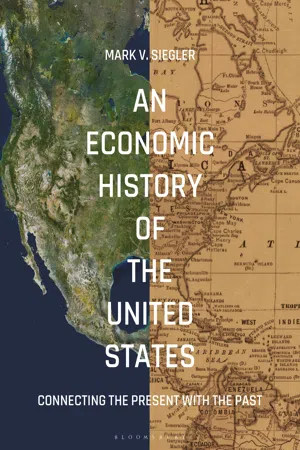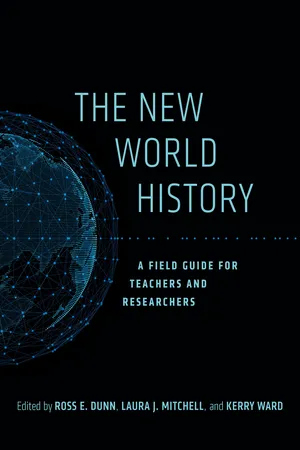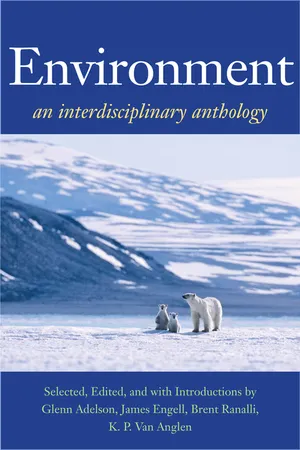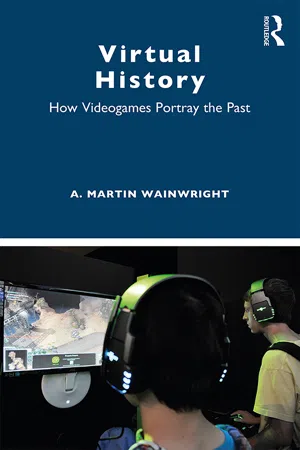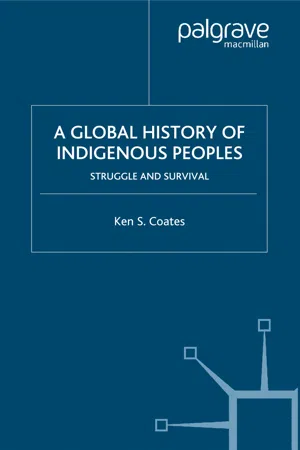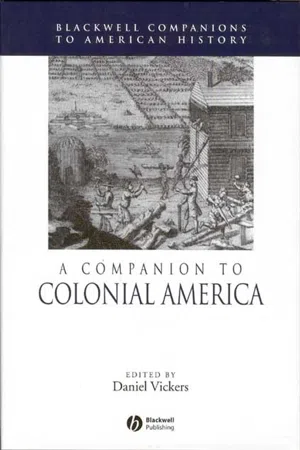History
Environmental Effects of The Columbian Exchange
The Columbian Exchange had significant environmental effects, as it led to the transfer of plants, animals, and diseases between the Old World and the New World. This resulted in the introduction of new species to different ecosystems, leading to changes in biodiversity and the environment. The exchange also contributed to the spread of agricultural practices and the transformation of landscapes.
Written by Perlego with AI-assistance
Related key terms
1 of 5
6 Key excerpts on "Environmental Effects of The Columbian Exchange"
- No longer available |Learn more
An Economic History of the United States
Connecting the Present with the Past
- Mark V. Siegler(Author)
- 2017(Publication Date)
- Red Globe Press(Publisher)
47 3 European Settlement and the Columbian Exchange The “Columbian Exchange” refers to the widespread exchange of diseases, plants, food crops, animals, ideas, culture, and human populations between the Old World (Eurasia and Africa) and the New World (Americas) following the voyage to the Americas by Christopher Columbus in 1492. 1 This was an unprecedented event in human history, which had profound ramifications throughout the world. This chapter examines how this exchange helped create the foundations for the United States’ economy and sowed the seeds for future economic growth and development. In economics, “exchange” usually refers to voluntary and mutually beneficial exchange, so the Columbian Exchange is somewhat of a misnomer since it was decid-edly one-sided. European populations in the Americas and Europe expanded dramat-ically due to new crops, while indigenous populations and societies in the Americas collapsed because of the onslaught of devastating European diseases and weapons. In 1500, the European share of the world population was 11 percent, while the indige-nous populations in the Americas represented 7 percent of the world total. By 1800, however, the European share of the world population had almost doubled to 20 percent, while the indigenous populations in the Americas had plummeted to less than 1 percent. 2 Populations in Africa grew as well, but millions of Africans were enslaved and forcefully transported to the New World, in part to fill the void created by the collapse in Native American populations. Four main questions are addressed in this chapter: • What were the consequences of the Columbian Exchange? - eBook - PDF
The New World History
A Field Guide for Teachers and Researchers
- Ross E. Dunn, Laura J. Mitchell, Kerry Ward, Ross E. Dunn, Laura J. Mitchell, Kerry Ward(Authors)
- 2016(Publication Date)
- University of California Press(Publisher)
Alfred Crosby’s scholarly engagement with environmental change has spanned more than four decades. His pioneering study, The Columbian Exchange: Biological and Cul-tural Consequence of 1492, appeared in 1973 and has proved so influential that his title phrase is now an item in the basic vocabulary of world history—including the vocabu-lary of textbooks and curriculum standards. Children of the Sun , published in 2006, charts the long-term changes in human energy use, differentiating among muscle power; the controlled use of fire; the release of biomass from burning wood, peat, and charcoal; and the consumption of fossil fuels. The chapter “The Columbian Exchange,” reprinted here, recapitulates the major arguments of The Columbian Exchange, situat-ing the transatlantic exchange of crops, domestic animals, weeds, and diseases in the context of changing human food production that followed the control of fire, cooking, and advancing agricultural technologies. Crosby repurposed aspects of his well-known book to make arguments not just about the consequences of early modern maritime exchanges but also about the long-term technological innovations that have altered the way humans interact with the earth and its resources. Crosby’s essay displays three elements that are common in global environmental history: attention to the planet’s biological past; identification of clear pivot points in the relationship between human communities and the natural world; and explanation of how the development of specific technologies changed our ability to exploit natural resources—for example, harnessing the wind with sails and adapting food crops to new habitats. The full scope of Children of the Sun examines energy use and the relationship between the sun and the earth from the era of single-celled organisms through human attempts to produce controlled nuclear fusion. - eBook - PDF
Environment
An Interdisciplinary Anthology
- Eugene Jolas, Andreas Kramer, Rainer Rumold(Authors)
- 2008(Publication Date)
- Yale University Press(Publisher)
Alfred W. Crosby, Jr., from The Columbian Exchange: Biological and Cultural Consequences of 1492 ( 1972 ) Crosby demonstrates the relevance of historical research to environmental studies by showing that in addition to its far-reaching biological effects, the European discovery of America had a long-lasting intellectual impact. It immediately challenged early Renais-sance Europe’s Christian and Aristotelian worldview; began the discrediting of the Bible’s scientific authority; and set the stage for a centuries-long debate between theories of single creation (monogeneticism) and multiple creation (polygeneticism) only resolved by Charles Darwin and Alfred Russel Wallace. On the evening of October 11 , 1492 , Christopher Columbus, on board the Santa Maria in the Atlantic Ocean, thought he saw a tiny light far in the distance. alfred w. crosby, jr. 661 Figure 19 . 2 Columbus Encounters the Indians by Theodor De Bry, late sixteenth century. Courtesy of the Hispanic Society of America, New York. A few hours later, Rodrigo de Triana, lookout on the Pinta ’s forecastle, sighted land. In the morning a party went ashore. Columbus had reached the Bahamas. The connection between the Old and New Worlds, which for more than ten millennia had been no more than a tenuous thing of Viking voyages, drifting fishermen, and shadowy contacts via Polynesia, became on the twelfth day of October 1492 a bond as significant as the Bering land bridge had once been. 1 The two worlds, which God had cast asunder, were reunited, and the two worlds, which were so very different, began on that day to become alike. That trend toward biological homogeneity is one of the most important aspects of the history of life on this planet since the retreat of the continental glaciers. The Europeans thought they were just off the coast of Asia—back to Eurasia again—but they were struck by the strangeness of the flora and fauna of the is-lands they had discovered . - eBook - ePub
Virtual History
How Videogames Portray the Past
- A. Martin Wainwright(Author)
- 2019(Publication Date)
- Routledge(Publisher)
The presence of coffee and sugar in Central America today tells an important story. It’s the story of the “Columbian Exchange,” the transfer of people, commodities, and diseases between the Old and New Worlds, and among regions of both groupings of continents, in the centuries following Columbus’s opening of regular contact between the Americas and Afro-Eurasia. This story is a central focus of modern historical analyses pertaining to European expansion, and European expansion is one of the major themes of Europa Universalis, as well as other grand strategy games that cover the period, including Sid Meier’s Civilization. In fairness to Paradox, the development team includes the Columbian Exchange as an “institution” that modifies productivity in Europe. This institution is supposed to emulate the effect of certain commodities, such as potatoes, in the European diet. However, this level is much more abstract than, for instance, having Europeans find a Central American territory producing chocolate (a New World crop) and turning it over to coffee cultivation. That neither the Europa Universalis nor Civilization series highlight the Columbian Exchange is evidence of at least two potential challenges to portraying the impact of humans on the environment and vice versa. One is the limitations inherent in making commercial videogames simple enough to attract a large market. The other is the extent to which game designers consider environmental aspects of history to be a priority. These challenges are important because human interaction with the physical environment has played an increasingly important role in the work of historians and other scholars dealing with the past. This chapter examines how well videogames deal with environmental issues while explaining how scholars have argued that the environment and human history are interconnected - eBook - PDF
A Global History of Indigenous Peoples
Struggle and Survival
- K. Coates(Author)
- 2004(Publication Date)
- Palgrave Macmillan(Publisher)
5 BIOLOGICAL CHANGES: ECOLOGICAL IMPERIALISM AND THE TRANSFORMATION OF TRIBAL WORLDS For generations, understanding of the impact of colonial expansion focused on the most obvious elements of the intrusion. Writers cele- brated the work of explorers and chronicled the adventures of soldiers and traders. They often memorialized the lives and times of the early settlers and spoke warmly of the efforts of missionaries and government agents to "civilize" the frontier districts. Little was said or known about an equally dramatic transformation that accompanied the mingling of peoples and the crossing of oceans. The newcomers brought with them animals, plants, and an ideology of land and resource use which quickly altered the natural landscapes of the newly identified territories. Less visibly, but no less powerfully, the exchange of microbes - diseases and germs - ushered in a profound reordering of indigenous realities. The newcomers carried, as well, radically different ideas about ownership of the land, concepts which quickly clashed with indigenous understand- ings of the human-land relationships. The impact of the ecological change rested largely on a simple but crucial reality. Parts of the world were biologically distinct from other areas. Because they were contiguous, there was considerable exchange over time between Europe and Asia, Asia and Mrica and North and South America, with the limits imposed more by climate and geography than by human movements. But distance provided other parts of the world with a substantial buffer. Unique environments, such as the Galapagos Islands in the eastern Pacific Ocean, provide the most telling evidence of the impact that isolation can and did have on the evolution of the biological setting. New Zealand, long separated from the 120 Biological Changes 121 Australian continent, did not host any manunals, save for a warm blooded bat, and therefore had few predators. - eBook - PDF
- Daniel Vickers(Author)
- 2008(Publication Date)
- Wiley-Blackwell(Publisher)
In the context of the debate about Native American populations, there are two ECOLOGY 49 corollaries to high pre-contact populations: a greater ecological impact on American biomes, and a more catastrophic loss of life in the centuries following contact. Euro-pean imperialism carried with it a secret and unconscious weapon: the shock radiation of Old World diseases. Smallpox, influenza, chicken pox, measles, diphtheria, typhoid, scarlet fever, malaria, yellow fever – a long list of pathogens flowed out from the Old World, killing between 70 and 90 percent of the Native populations and emptying vast stretches of land (Cook, 1998). Recent studies are suggesting that the post-Columbian epidemics need to be seen as long-term processes rather than sudden events. Malnutri-tion may have undermined disease resistance: paleopathologists conclude that in the great interior valleys declining diet and nutrition left Native peoples with weakened immune systems, potentially contributing to their susceptibility to Eurasian diseases (Buikstra, 1993; Perzigian et al., 1984). While these conclusions might suggest an early impact of Old World diseases, other scholars are emphasizing a complex mosaic of disease impacts, with variable exposures and chronologies of infection unfolding over centuries. Disease movement came in “spurts and bursts,” as it ripped through dense settlements and then slowed at “buffer zones” until spreading to other popula-tion centers (Larsen and Milner, 1994; Verano and Ubelaker, 1993). Landform, climate, and disease also shaped the trajectory of societies of western Africa that would be caught up in the destructive compass of the early modern Atlantic world. Here a series of paradoxes grounded in regional ecology set the stage for a catastrophic spiral.
Index pages curate the most relevant extracts from our library of academic textbooks. They’ve been created using an in-house natural language model (NLM), each adding context and meaning to key research topics.
